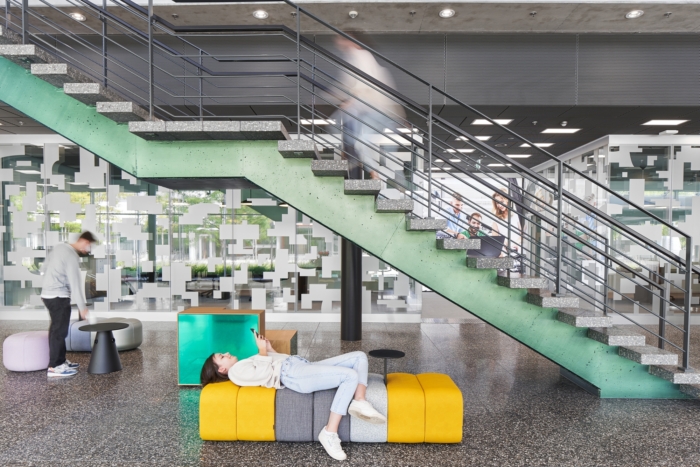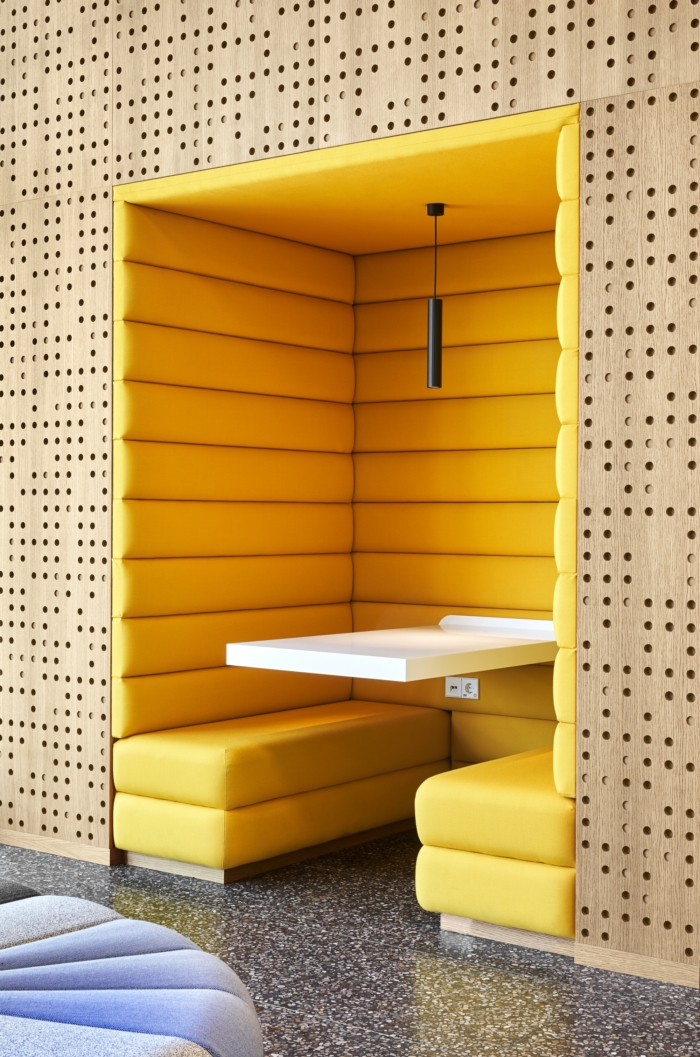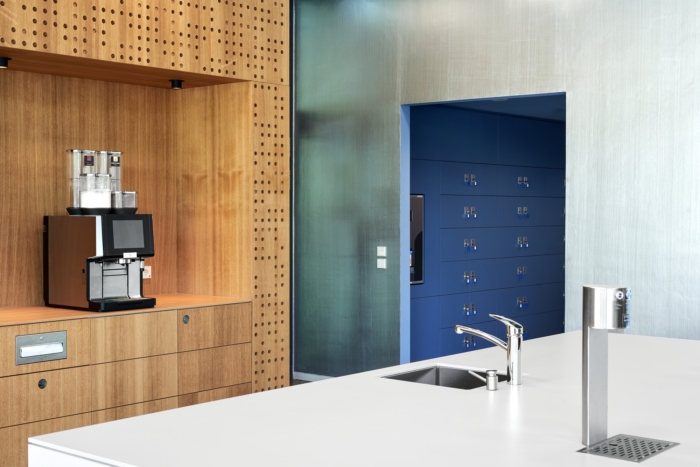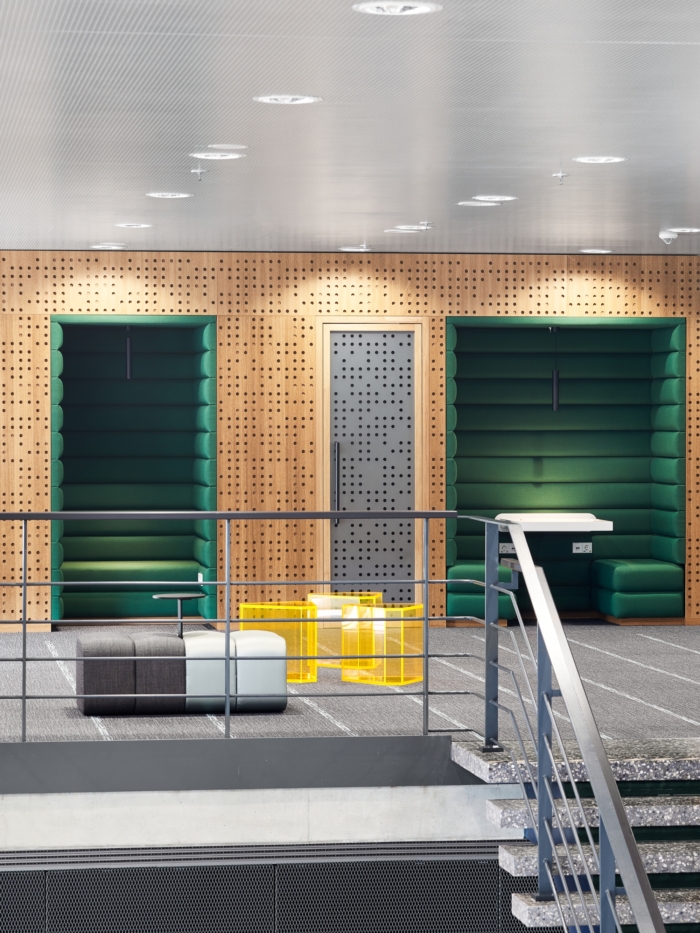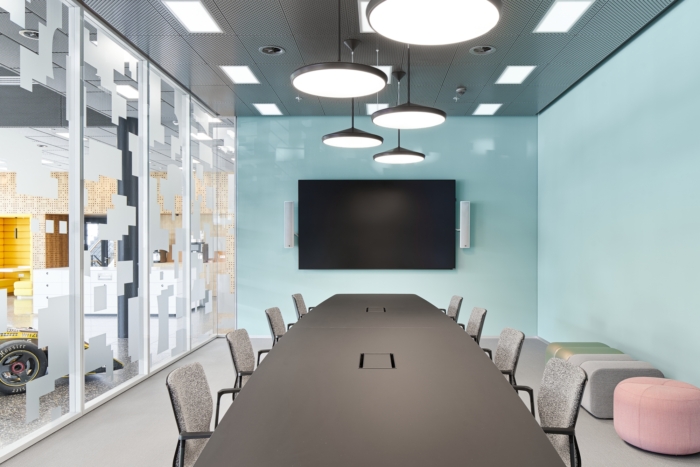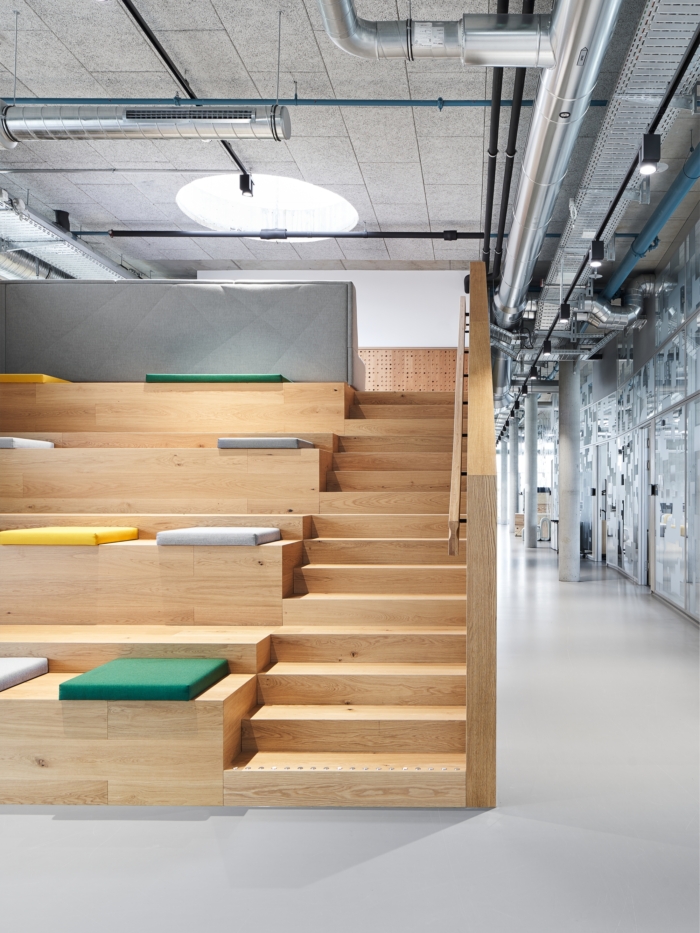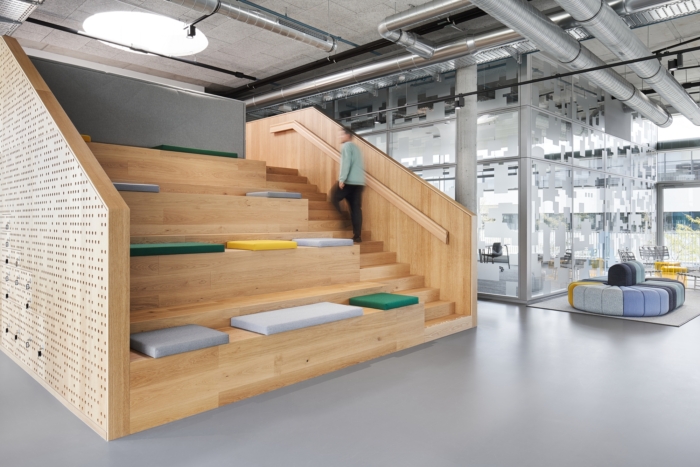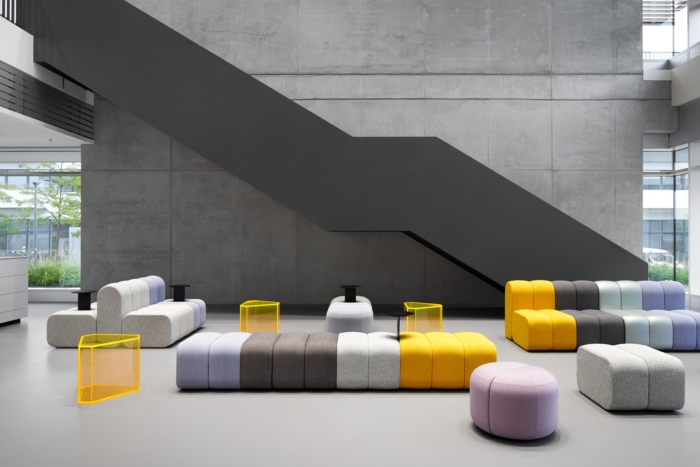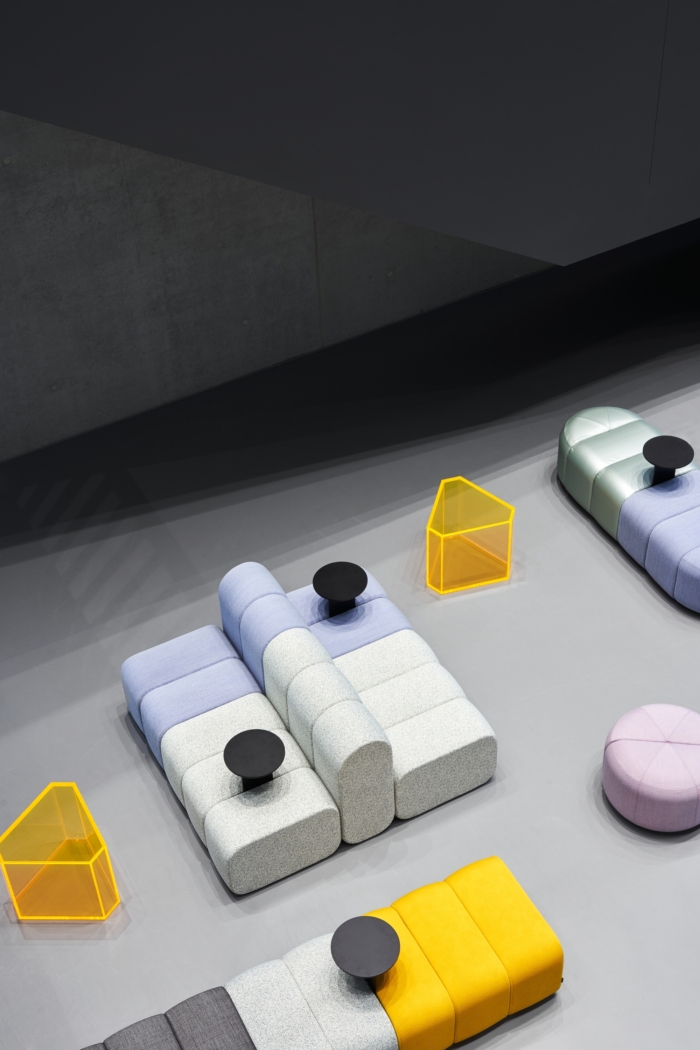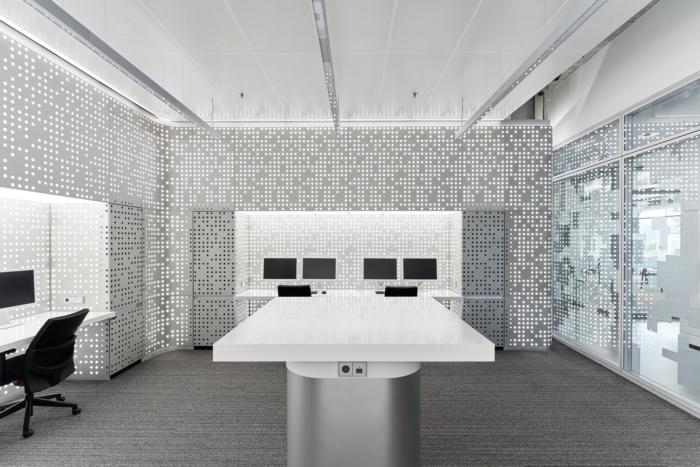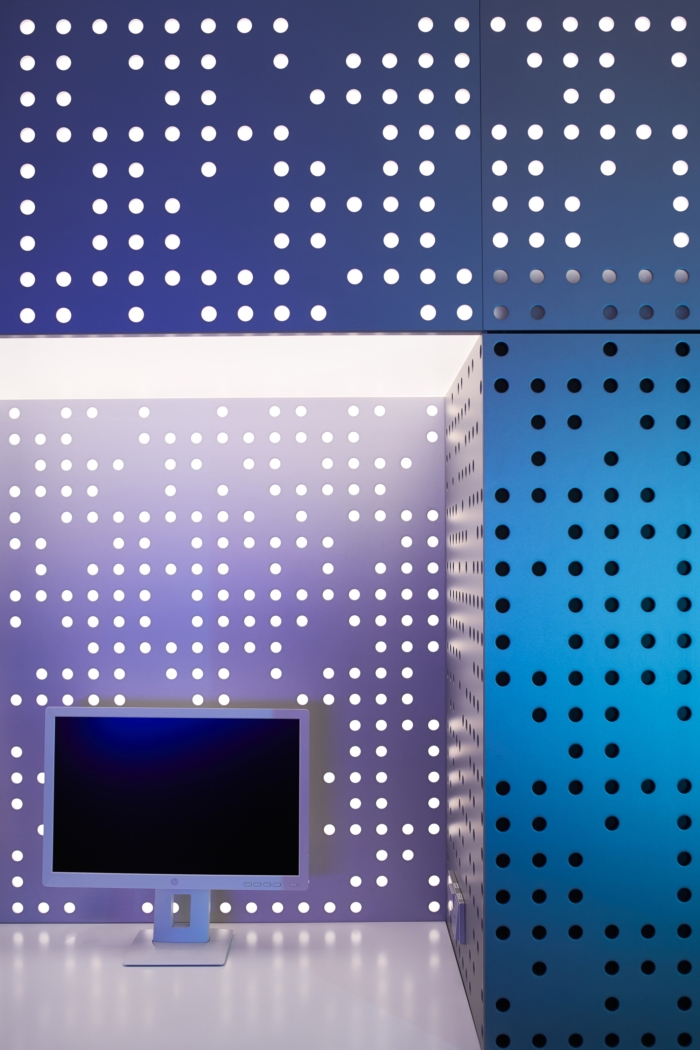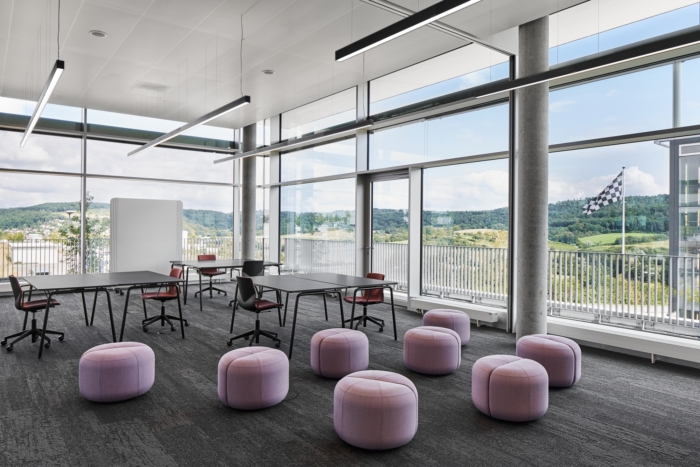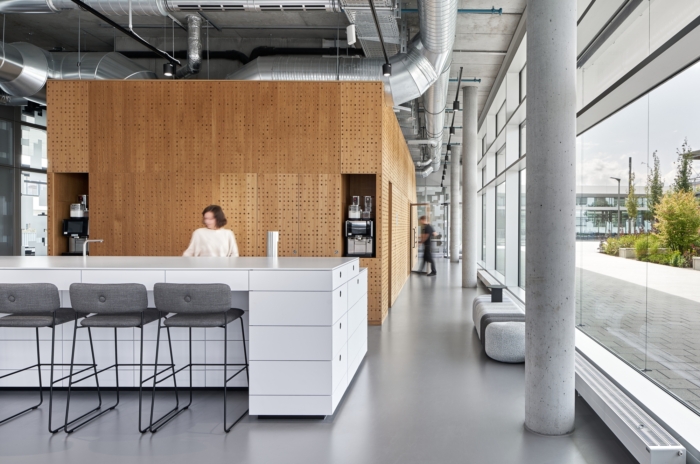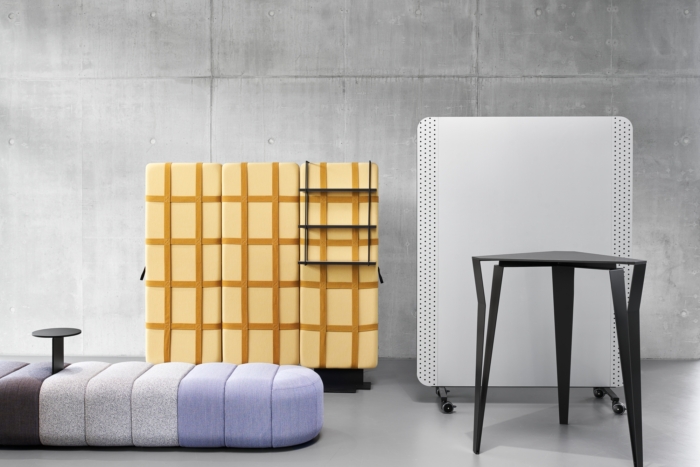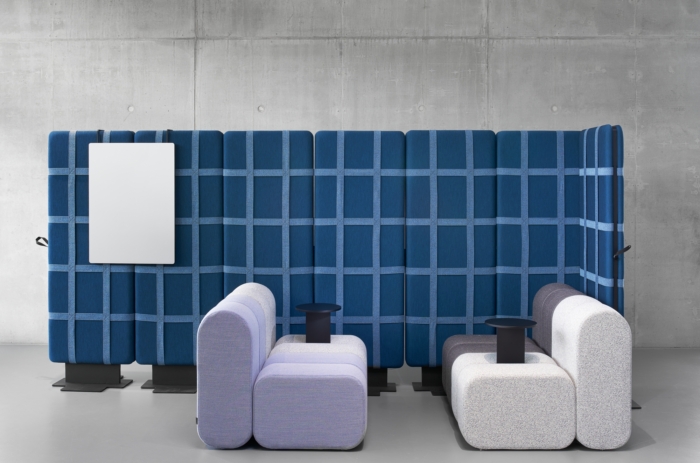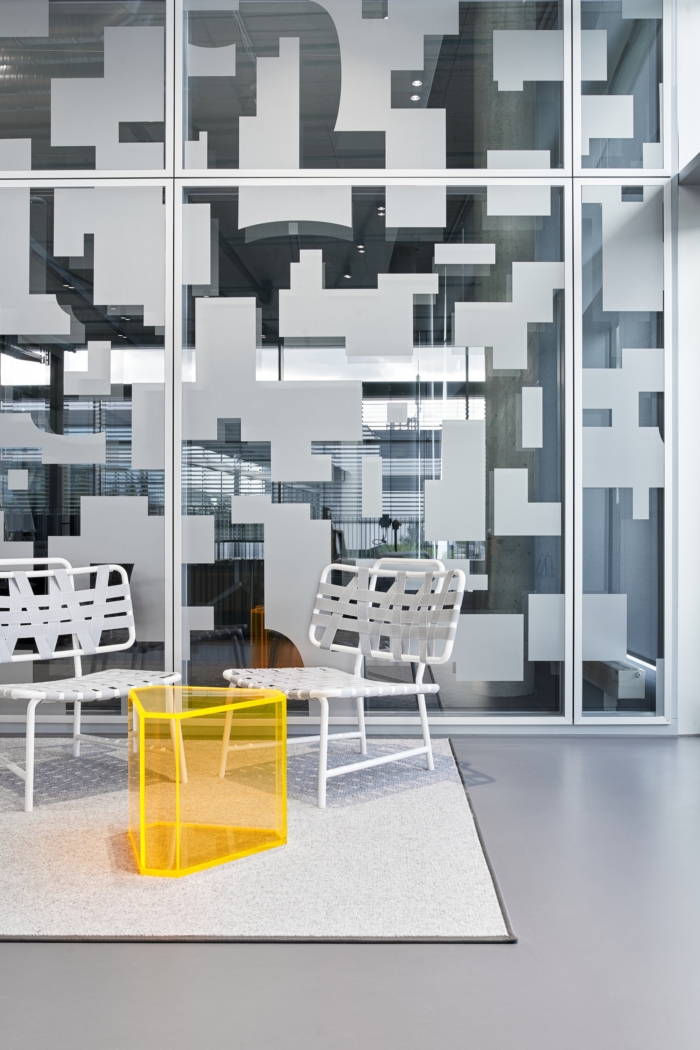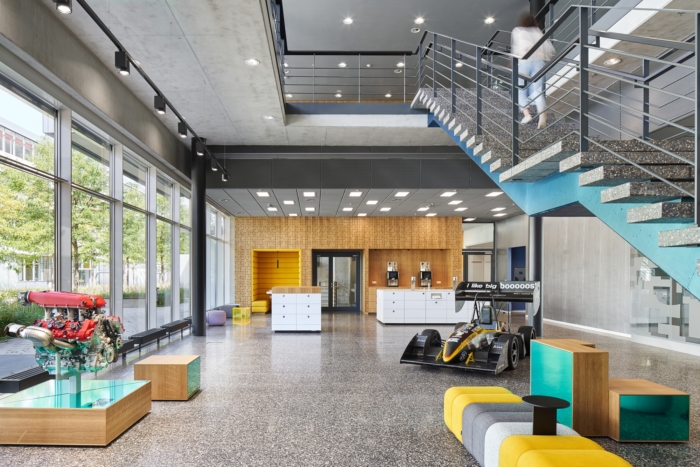
Bosch Engineering Offices – Abstatt
Bosch instituted a sense of flexibility in the realization of their new Abstatt offices, a philosophy believed to give employees more open minds to better innovate for the future.
Studio Alexander Fehre completed the Bosch Engineering office with textured wall finishes and ample natural light in Abstatt, Germany.
It is good when thinking can change its direction. Because that is the only way creativity grows out of it. And that, in combination with individuality, is the trademark of Bosch Engineering (BEG). The engineers at the wholly owned subsidiary of Robert Bosch GmbH ask themselves very specific questions in their search for highly individualised answers for the (electric) mobility of today and tomorrow. Standard solutions? Certainly not! An important fact that should also be reflected in the working environment: The more flexible the place where the future is created, the more open the mind. In this way, thinking is constantly steered in new, creative directions. Stuttgart-based Studio Alexander Fehre implemented this in two of the company’s buildings in Abstatt.
Two buildings, however, where the conditions could not have been more different. While the building with the number 301 already existed, the one bearing the 204 is a new construction.
Two situations that were ultimately to come together through an over-arching interior concept to form the image that BEG represents: the know-how of an established corporation paired with the dynamics of a start-up. Those that work here are young, come from all over the world, believe in flat hierarchies and are full of initiative. The standard of work and creativity are high, whether it‘s finding customer solutions for industry, for aircraft, or for anything on the road, rail, or racetrack. And customers should feel this right away: BEG is the perfect partner for challenging new developments.
The new interior therefore should radiate this dynamic and the open-ness to innovation. This was the brief given to Studio Alexander Feh-re. In addition, the curiosity that makes forward-looking developments possible in the first place and the courage to take unusual paths in the search for answers should be tangible. The foyer of the existing building 301 did not have any of this before the redesign. Something fresh was needed. An identity-forming environment in which the fascination for technology and the fun of technical play come together and encourage people to linger.
Now, after the redesign, visitors are greeted by bright yellow upholstered seats in combination with shimmering metallic contrasts – an invitation to exchange ideas. Glass surfaces, covered with a sort of camouflage print that resembles the prints used to conceal automobile prototypes, give the room a digital aura. This aura is supported by the new wood paneling, whose milled grooves can be read as the image of a punch card. The staircase now boasts green-blue iridescent side panels – chroma shine lacquer is responsible for this exciting shimmering effect. Futuristic acrylic glass cubes catch the daylight with their edges and glow in a beautiful orange colour. The dark stone floor is the only remnant of the foyer‘s original appearance and forms an unusual contrast to the new look. Scattered around the room are cubes with shiny metallic surfaces that set exciting accents and also function as exhibition furniture. The formerly cold and uninviting space now welcomes visitors in a warm, friendly atmosphere. The lounge area on the first floor is complemented by a modern café-bistro, surrounded by a bright yellow upholstered alcove that invites constructive one-on-one conversations.
On the upper floor, modern conference rooms alternate with areas for presentations and informal meetings.
Design: Studio Alexander Fehre
Design Team: Alexander Fehre, Per Hohberg, Johanna Pander, Josse Freund, Magdalena Paprotna, Inna Strokous
Photography: Philip Kottlorz
